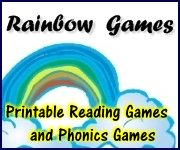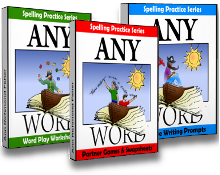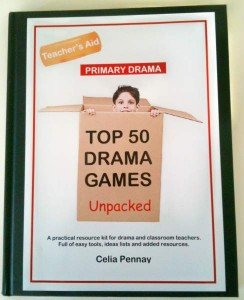How to Write an Essay: Three Super Easy Ideas for Expository Writing
 Learning how to write an essay is a foundational writing skill all students must master. From the basic paragraph to the complete essay, teach your class how to write an essay in three easy lessons.
Learning how to write an essay is a foundational writing skill all students must master. From the basic paragraph to the complete essay, teach your class how to write an essay in three easy lessons.
First, we'll work with paragraphs, the basic unit of any piece of writing. Then we'll weave paragraphs togther into a problem-solution essay, followed by a compare-contrast essay. I'll also give you some suggestions as to how you might apply the essay structure to a creative writing assignment.
Let's begin teaching your students how to write an essay!
Lesson 1: How to Write an Essay: The Basic Paragraph
- Step 1: Explain to your students that any essay can be broken down into smaller pieces called paragraphs. With your class, review the definition and purposes of paragraphs below:
- a paragraph is a group of related sentences about one main idea
- a paragraph has a topic sentence which states the main idea of that paragraph
- a paragraph has supporting sentences which add details about the main idea
- a paragraph has a concluding sentence which summarizes the main idea and can also transition to the next paragraph
- a paragraph's purpose is to organize thoughts and information in a meaningful way
- Step 2: Beforehand, please visit this page, the parts of a paragraph, for hands-on activities that teach paragraph structure. Your kids will enjoy making paragraph stoplights and paragraph chains, and these projects will help your kinesthetic and visual learners understand a paragraph's basic structure.
- Step 3: For a third hands-on activity, distribute copies of old magazines and newspapers. Have students locate good paragraphs and highlight the parts of a paragraph in different colors.
- Step 4: Now, instruct students to write their own paragraphs. For some creative writing fun, visit this collection of prompts, and select several ideas for your class. Verify that students have included topic sentences, supporting sentences, and conclusions by highlighting them in alternate colors.
Lesson 2: How to Write an Essay: The Problem-Solution Essay
- Step 1: Explain to your class that the purpose of a problem-solution essay is to identify a problem and propose a solution. Such an essay clarifies the writer's suggestions, thereby helping the reader to see the writer's point-of-view.
- Step 2: Now let's have some creative writing fun with the problem-solution essay! Visit these pages, writing fairy tales and fairy tale writing prompts, to jumpstart your thinking about the issues these timeless characters faced. (Check out American tall tales and writing fables as well!). Brainstorm extensively with your students about alternative ways of solving those problems. Here's an example: was a royal ball really the best solution for the prince to find a wife? What other avenues could the prince have tried first? Or was dressing as Grandmother and frightening Red Riding Hood really the best way for the wolf to get a meal? What other solutions to his hunger seem more sensible?
- Step 3: After a thorough discussion of the difficulties faced by familiar fairy tale characters, instruct your students to choose a character and their problem and write a creative problem-solution essay, offering alternatives for their selected character's consideration. Explain to your students that their essays should be between three and five paragraphs in length, using the following format:
- First paragraph: Present the problem, stating it as clearly as possible. Use supporting sentences to explain the difficulty.
- Second through fourth paragraphs: Offer detailed solutions to the problem. Each paragraph should focus only on one solution, containing supporting sentences that clarify and explain each suggested solution.
- Last paragraph: Summarize the original problem and the suggested solutions.
- After proofreading and revising, enjoy an afternoon of read alouds, as your students share their creative solutions for the difficulties faced by familiar fairy tale folks!
Lesson 3: How to Write an Essay: The Compare and Contrast Essay
- Step 1: Explain to your students that a compare and contrast essay addresses the similarities and differences of a specific topic. Begin a discussion about the following signal words, used in these essays. Signal words used most often in comparing similarities are like, similar, parallel, and alike. Signal words used most often in contrasting differences are however, on the other hand, differently, in contrast, differ, and opposite.
- Step 2: Have each student select two fairy tale characters. Using a Venn diagram, ask each student to list the similarities and differences between these two characters.
- Step 3: Now ask students to use their Venn diagrams as reference sheets for writing compare and contrast essays. Explain to students that their essays should be four paragraphs in length, using the following format:
- First paragraph: Begin with an introduction discussing the two characters.
- Second paragraph: Explain the similarities between the characters.
- Third paragraph: Explain the differences between the characters.
- Fourth paragraph: Tie the ideas together in a conclusion.
- After proofreading and revising, enjoy entertaining rounds of read alouds, as your students creatively compare and contrast their favorite fairy tale heroes!
I hope your students have found these activities enjoyable as they've learned how to write an essay, with help from fairy tale folklore!
Return from How to Write an Essay to Creative Writing Lesson Plans
Return from How to Write an Essay to Creative Writing Ideas and Activities
Helping You Write Across the Curriculum!
copyright 2009-2013 www.creative-writing-ideas-and-activities.com
Our Most Popular Pages
5. Writing a Personal Narritive
10. Elements of Persuasive Writing
Recommeded Resources:
AnyWord(TM) Spelling Practice Series!
Worksheets, games and activities to use with any spelling words. Three volumes in all!
Stop Essay Pain!
LitWorks.com
Resources to help students prepare for literature examinations.
Teach Kids Drama!








